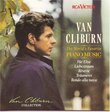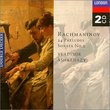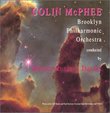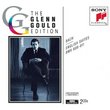| All Artists: Carson Kievman Title: Carson Kievman: Symphony No. 2(42) Members Wishing: 0 Total Copies: 0 Label: New Albion Records Release Date: 11/18/2009 Genre: Classical Style: Symphonies Number of Discs: 1 SwapaCD Credits: 1 UPC: 022551008120 |
Search - Carson Kievman :: Carson Kievman: Symphony No. 2(42)
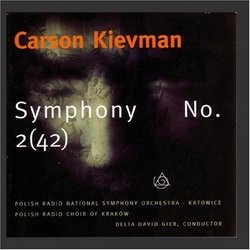 | Carson Kievman Carson Kievman: Symphony No. 2(42) Genre: Classical
Carson Kievman: Symphony No. 2(42) by Carson Kievman |
Larger Image |
CD DetailsSynopsis
Album Description Carson Kievman: Symphony No. 2(42) by Carson Kievman Similarly Requested CDs
|
CD ReviewsA truly original and artistically sensitive work. 03/20/1999 (5 out of 5 stars) "This orchestral work was commissioned by the Florida Philharmonic Orchestra to honor the 200th anniversary of the death of Mozart. In the tradition of such visionary pieces as R. Strauss's "Tod und Verklärung" (Death and Transfiguration), H. Berlioz's "Symphonie Fantastique," Toshiro Mayazumi's "Mandala Symphony," etc., the program of this four-movement work is transcendent and epic in scope, depicting "a metaphorical journey from youth through death, and beyond." In the first movement, "Prerequiem," youthfulness is depicted not with the usual cliché of footloose and fancy free joy, but is shown as a struggle to create and maintain some independent existence in a relatively hostile world. A main theme, built of modal and chromatic steps, perfectly describes this unsettled, restless soul (unusually orchestrated with strings in unison with a melodic (!) tympani line). The melody goes through many variations (psychological modes perhaps), sometimes collapsing into chaos and despair. Eventually a matured tone is attained in a Maestoso section. The initial energy is still heard in recapitulations of the main theme with underlying rushing figures, but that is shaded with the timbres of funereal bells, and the violins and violas played with guitar picks, a sound depicting the mastering of opposing forces. The first movement then slips into its last few minutes as a richly orchestrated elegy including deep bells, church chimes and low horns reminiscent of Russian Orthodox chant or Buddhist ceremony. The second movement begins with a slow, steady melody that alternately evokes despairing, dissonant lines surrounding it, or moves into the rich harmonies of an enlightened understanding achieved toward life's conclusion. The movement concludes with gentle chimes and strings. The third movement, "Passage," begins with a phantasmagoria of chromatically whirling strings and winds, punctuated with percussion, with laughing slides from the brass. This gradually works itself into a flowing landscape of heavenly and hallucinatory imagery, an amazingly original sound. The music settles into a profound and universal peacefulness. The fourth movement suggests a passageway into a new dimension, equally heaven's periphery, the Egyptian (or Greek, etc.)underworld, or another non-earthly transcendent state. The original theme is heard accompanied by quiet drones and gentle undulations, and a flowing, profound and serious peacefulness reigns. The soul however still seems to be pushed on toward ascension to further realms with occasional rushing modulations, by heavenly visions announced by widely spaced bell sounds, and by choral voices urging the soul ever upward. Gamelan-like pulses are heard, and suddenly the Lachrymosa from Mozart's Requiem is quoted. It's chromatic undulations are then sequenced continuously into a massive extension both historical (hints of Mahler, Ives, Ligeti and further 20th-century moderns)and cosmological in its poetry. Then the music just ceases, eternally silent. A truly original and artistically sensitive work. -- "Blue" Gene Tyranny, All-Music Guide" A Visionary Movement 09/25/2000 (5 out of 5 stars) "The Florida Philharmonic Orchestra commissioned this symphony to observe the 200th Anniversary of the death of Mozart. The first movement concerns youthful ambitions, bravado, and achivement. The opening theme is daring, with timpani taking part in the melodic line. This sound seems to the writer to foreshadow death. Another theme tries to rise to the heights, but is consistently shot down by opposing sounds from the orchestra. The daring youthful themes undertake a battle with the forces of reaction. It gains seriousness and maturity, even though the upper strings all attack in a flurry caused by having them played with guitar picks. The sounds of creativity win out, but there is an elegiac shadow amidst the triumph. Might the cost have been too high? The second movement is a sad and beautiful one, pondering death and loss. For a while the texture suggests the richly polyphonic texture of the Renaissance composers such as Palestrina or Tallis, but the large number of independent parts joins in the unison of the Classical era. Bells suggest a death knell. But the strings rebuild to a life-asserting theme resulting from acceptance of loss, which gives the artist power. The movement ends peacefully. The third movement is a scherzo, a bitter, mocking dance of death, with various layers of music proceding in juxtaposed layers in the manner of Ives. Strong chords end this whirling music. These open into the fourth movement, a visionary movement. An English horn theme wanders into a new spiritual realm, where freely moving strings form wave-like textures. This is a vision of the afterlife, calling with seductive power in three glockenspiels and harp. The final movement is the journey towards that realm, a gradual approaching of Mozart's sublime Lacrymosa (from his unfinished Requiem) which emerges from echoes of itself. In the end a multitude of voices coalesce into Oneness. -- Joseph Stevenson -- All Classical Guide"
|

 Track Listings (4) - Disc #1
Track Listings (4) - Disc #1
